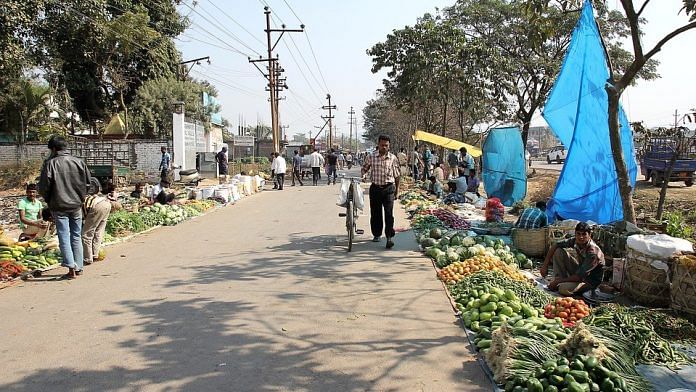New Delhi: Prime Minister Narendra Modi had dismissed MGNREGA – Congress-led UPA’s marquee rural jobs scheme – in Parliament in 2014. Five years later, as the PM begins his second term, the Economic Survey for 2018-19 has claimed that this scheme, introduced in 2006 under the Mahatma Gandhi National Rural Employment Guarantee Act, was streamlined by Modi government in 2015.
The first survey under Modi 2.0 states that MGNREGA was “saddled with inefficiencies” , “widespread corruption”, “political interference” as well as “significant delay in wage payments” after it came into effect in 2006. But it was fine-tuned by the government in 2015 using technology that included “implementation of Direct Benefit Transfer (DBT) and Aadhar linked Payments (ALP)”, the survey states.
The government had reviewed the scheme, laid more emphasis on bringing transparency, accountability and “creation of durable productive assets”, according to the survey.
In a 16-page chapter titled ‘Effective Use of Technology for Welfare Schemes – Case of MGNREGS’, the survey shows how the scheme’s implementation has improved, especially when it comes to timely payment of wages.
Also read: ‘Nudge’ is the secret behind success of Modi’s pet projects, says Economic Survey
The scheme
MGNREGA, introduced by the Congress-led UPA government in February 2006, promises 100 days of employment annually to each rural household.
While the Act mandates that wages be paid within 15 days, delay in payments has been the single biggest drawback of this scheme, compelling even the Supreme Court to pull up the government for it.
When it came to power, the BJP government had criticised the scheme, with PM Modi even going on to term it a “living monument of the UPA’s failures” in Parliament.
But, given the politically and electorally crucial nature of this scheme, the BJP went on to bring reforms into it, making modifications for its implementation and allocation of wages.
The scheme has a current budgetary allocation of Rs 60,000 crore.
‘Lesser delay in payment of wages’
The Economic Survey claims that use of DBT and Aadhaar-based payments has ensured wages reach beneficiaries on time.
“For a workforce programme to effectively alleviate distress, timely payment of wages is critical,” says the survey.
While beneficiaries had to earlier collect their wages in cash from either banks or post offices, the central government today credits it on a real time basis in their bank accounts.
“As a result of this initiative, e-payments under MGNREGS has increased from 77.34 per cent in FY 2014-15 to 99 per cent in FY 2018-19. In 2014-15, 26.9 per cent of the payments were generated within 15 days, which has now risen to 90.4 per cent in 2018-19,” the survey adds.
It also claims that delay in payments have reduced by almost one third – from 35 per cent to less than 10 per cent in the post-Aadhaar Linked Payment period – in terms of percentage of wages received with a lag of more than 90 days.
However, what the survey does not point out is that while delays in generation of wage payments have been reduced, they still continue to reach the beneficiaries’ accounts late. In fact, the main challenge before the rural development ministry is to bridge the gap between wage generation and payments.
As maintained by this government, the survey too says Aadhaar has helped remove ‘ghost’ beneficiaries.
Also read: No, Modi govt’s income support scheme for farmers has not made MGNREGS redundant
Helping the vulnerable
Before the introduction of reforms, the survey says, this scheme was not fulfilling its purpose of acting as a safety net for the poor in distress.
“In blocks that are affected by drought, people demanding work increased by 20.7 per cent (after Aadhaar based payments were introduced). Effective implementation of MGNREGS should increase demand for work in the distressed areas. Before introduction of ALP, the rural poor had treated MGNREGS as an option to earn additional income during good times only. This actually defeated the purpose of the programme,” the survey claims.
It also states in the post-ALP period, there has been a significant increase in “person days worked” in blocks that are affected by drought.
This also means that after ALP, women, SC and ST workforce had increased during times of distress, the survey says.
What next
Talking about the way forward, the survey says that MGNREGA can, in fact, serve as a “probable indicator of distress” with the demand for work serving as a real-time indicator of crisis.
The survey also calls for expansion of permitted works under the scheme, to include new ones, while also ensuring skill development of workers. It adds that the MGNREGA experience with Aadhaar and DBT should be replicated for other government schemes too.
Also read: India can achieve Modi’s $5 trillion economy target via private investment: Economic Survey






